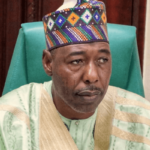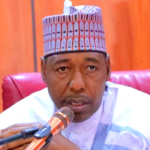The Organisation for Economic Co-operation and Development has revealed that its preliminary data indicated that International aid from official donors fell in 2024 by 7.1 per cent in real terms compared to 2023, the first drop after five years of consecutive growth.
The fall in Official Development Assistance was due to a reduction in contributions to international organisations, as well as a decrease in aid for Ukraine, lower levels of humanitarian aid, and reduced spending on hosting refugees in donor countries.
ODA by member countries of the OECD’s Development Assistance Committee amounted to $212.1bn in 2024, representing 0.33 per cent of DAC members’ combined GNI.
OECD’s Secretary-General, Mathias Cormann, said, “Pressures on development finance and developing countries’ growth are increasing. Optimising the effectiveness of available official development assistance will help developing countries manage these fiscal pressures, make essential investments in growth, and protect the most vulnerable.”
It mentioned that the net ODA to Ukraine fell by 16.7 per cent in real terms compared to 2023 and amounted to $15.5bn, representing 7.4 per cent of total net ODA. Humanitarian aid dropped by an estimated 9.6 per cent in 2024, amounting to $24.2bn.
The report indicated that ODA used to cover refugee costs within donor countries fell by 17.3 per cent in 2024 compared to 2023 and amounted to $27.8bn, representing 13.1 per cent of DAC member countries’ total ODA, down from 14.6 per cent in 2023. For five countries, in-donor refugee costs still represented more than a quarter of their ODA in 2024.
Meanwhile, the United States continues to be the largest DAC member country provider of ODA ($63.3bn), accounting for 30 per cent of total DAC ODA in 2024, followed by Germany ($32.4bn), the United Kingdom ($18.0bn), Japan ($16.8bn), and France ($15.4bn).
Also, OECD DAC Chair, Carsten Staur, said, “It is regrettable that ODA decreased in 2024 after five years of continuous growth. It is even more concerning that some of the major donors have signaled further, and quite significant, decreases over the coming years.
“In this situation, it is paramount that ODA is invested where it is most needed, especially in the poorest and most fragile countries. Going forward, poverty eradication, the just green transition, and governance should remain at the core, and we must also make ODA work harder in mobilising other sources of finance. Doubling down on aid effectiveness, together with partner countries, will be the key to achieving this.”
It further highlighted that ODA rose in ten DAC member countries and fell in twenty-two countries. Only four countries exceeded the United Nations’ target of 0.7 per cent ODA to GNI: Denmark (0.71 per cent), Luxembourg (1.00 per cent), Norway (1.02 per cent) and Sweden (0.79 per cent).
Also, the Net bilateral ODA for programmes and projects and technical assistance, excluding in-donor refugees and humanitarian aid, fell slightly by 1.2 per cent in real terms, due in part to the reduction in ODA for Ukraine. Net debt relief grants remained low at $241m.
Preliminary estimates show that net bilateral ODA flows from DAC members to Africa stood at $42bn in 2024, representing a fall of one per cent in real terms compared to 2023. Within this total, net ODA to sub-Saharan Africa was $36bn, a decrease of two per cent in real terms.
“Net bilateral aid flows from DAC members to the group of least developed countries (LDCs) were $35bn, a fall of 3 per cent in real terms compared to 2023,” the report stated.







